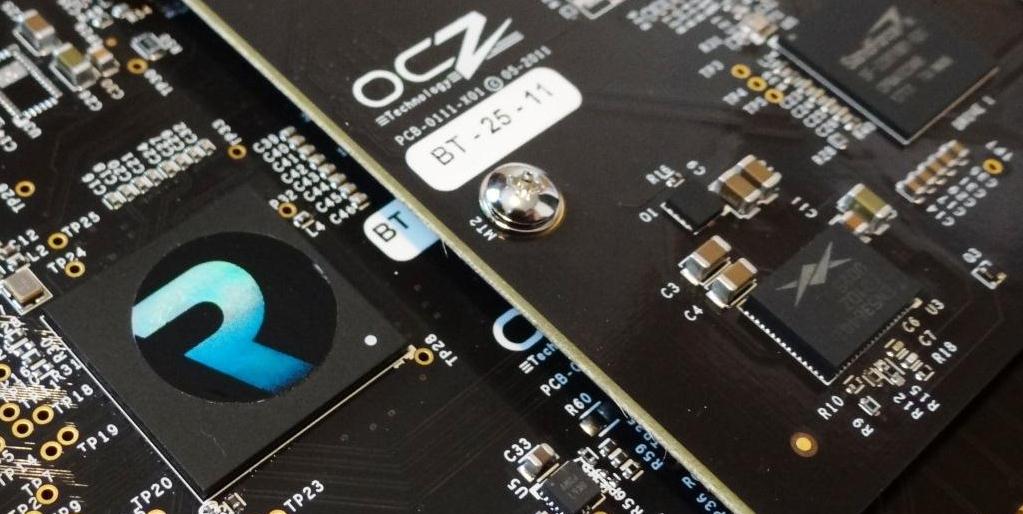SSD COMPRESSION AND TESTING FLUCTUATIONS
All SSDs are not created equal and many new SSD enthusiasts realize that when they test their new drive to confirm specifications and ensure all is in order. SandForce controlled SSDs, as in the RevoDrive 3 x2 480GB PCIe SSD we are testing today, use compression techniques in storage whereas many others do not. This creates a bit of confusion when enthusiasts test the drive with random data through benchmarking programs such as AS SSD and Crystal Diskmark. The results seem to be lower than the listed specifications.
The results actually present a false portrayal of the drives ability when compared to other drives such as Samsung, Crucial or Intel. It is for this reason that all of our comparison testing is done through PCMark Vantage. PCMark Vantage HDD Suite simply provides evaluation results based on transfer speeds reached through typical user patterns. Vantage provides a better testing medium, in that, it sees through the typical synthetic benchmarks and provides us with ‘true to life’ results of the drive.
IOMETER BENCHMARK VER. 1.1.0
Some may be a bit surprised that we are starting our benchmarks with a program that we, traditionally, have used very little. This review is different. Probably the biggest claim made in OCZ specs that we wanted to verify was that the Revo 3×2 was capable of 200, 000 IOPS. Anyone familiar with storage already knows that this has been unheard of until now and no product has even come remotely close to what OCZ is asking for the 240GB version of the Revo 3 x2.
OUR TEST SETUP
With respect to testing, we thought it only fair to set up IOMeter in such a fashion that would show its ability as an enterprise device. If it can survive at the enterprise level, it will sail through anything the consumer has to offer. When you consider a typical consumer situation, the user will typically be running the OS as well as several applications requiring the use of several threads simultaneously, this being no different than the enterprise workstation user. In addition to this, the enthusiast or workstation class applications will continuously stream commands to the drive as data is being written to the SSD.
In consideration, we set IOMeter up with two managers, each manager having two workers and wanted to take advantage of the Intel i7-2600 as it is a multi-core processor. Four workers would be working simultaneously which would require the use of four cores. A true to life comparison would be such with a graphic designer who would require a thread for the OS, as well as others in multi-tasking applications such as Adobe After Effects and Adobe Premier Pro.
 Using a Que depth of 64, we were able to achieve a steady IOPS of 196, 000 utilizing 4 cores as can be seen in the system monitor. We reached a high of 211, 000 IOPS on 3 occasions but it only remained there momentarily before settling back into this area. This would be the first time any single form factor consumer storage device has ever reached this. I guess the amusing sticker included in OCZ SSDs stands true.
Using a Que depth of 64, we were able to achieve a steady IOPS of 196, 000 utilizing 4 cores as can be seen in the system monitor. We reached a high of 211, 000 IOPS on 3 occasions but it only remained there momentarily before settling back into this area. This would be the first time any single form factor consumer storage device has ever reached this. I guess the amusing sticker included in OCZ SSDs stands true.
PG 1 – INTRODUCTION
PG2 – PHYSICAL CHARACTERISTICS AND VCA TECHNOLOGY
PG3 – IOMETER BENCHMARKS AND 200, 000 IOPS
PG4 – ATTO, CRYSTAL DISKMARK AND AS SSD BENCHMARKS
PG5 – HDTUNE PRO TESTING
PG6 – PCMARK VANTAGE COMPARISON TESTING
PG7 – CONCLUSIONS
 The SSD Review The Worlds Dedicated SSD Education and Review Resource |
The SSD Review The Worlds Dedicated SSD Education and Review Resource | 
